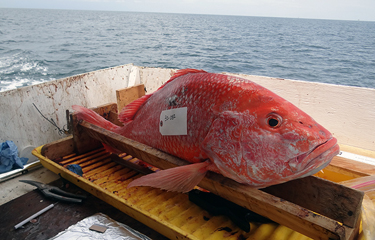Study finds significant liver damage in Gulf of Mexico red snapper

A study completed by researchers from the University of South Florida has revealed almost every red snapper studied in the Gulf of Mexico in the wake of the Deepwater Horizon spill showed signs of liver damage.
Red snapper is the latest Gulf species studied by researchers at the USF College of Marine Science in the wake of the devastating 2010 oil spill. Erin Pulster, a USF researcher and lead author of the study, said the results give “early warning signs of a compromised ecosystem.” Pulster and her team recently had their findings published in Aquatic Toxicology.
Previous reports have incidated such fish as yellowfin tuna and golden tilefish also experienced high levels of oil exposure. The red snapper study, though, is the first to tie the presence of crude oil in the liver, gall bladder, and bile, with such disease indicators as inflammation, lesions, and parasites.
Steve Murawski, a senior author on the study and a USF professor, led the decade-long study into the response for the Deepwater Horizon spill.
“This is a unique study. Most investigations of oil spill effects only last a year or two, and this study gives us both a wide scale of reference across the Gulf and also long-term monitoring, which we lacked prior to Deepwater Horizon,” said Murawski, who also serves as the St. Petersburg Downtown Partnership Peter R. Betzer Endowed Chair at the USF College of Marine Science.
Over a six-year period ending in 2017, researchers sampled fish from more than 70 spots in the Gulf. Across the body of water, 58 percent of the 152 red snapper had lymphocytic inflammation, 57 percent had pigmented macrophage aggregates, which help protect the body against dangerous elements.
The study also found that 55 percent of the red snapper studied had parasites. Researchers found the same percentage had granulomas, which are small lumps designed to keep bacteria and fungi from spreading in the body. They also found that another 55 percent had scarring of their bile duct tissue.
Pulster said that 99 percent of those sampled had an average of five warning signs of liver damage.
The species is considered a popular fish for both commercial and recreational fishermen and in recent years, the federal government has ceded some authority to the states regarding recreational fishing seasons.
Last year, NOAA Fisheries set a catch limit 7.4 million pounds for red snapper in the Gulf for recreational fishermen.
Photo courtesy of USF College of Marine Science






Share